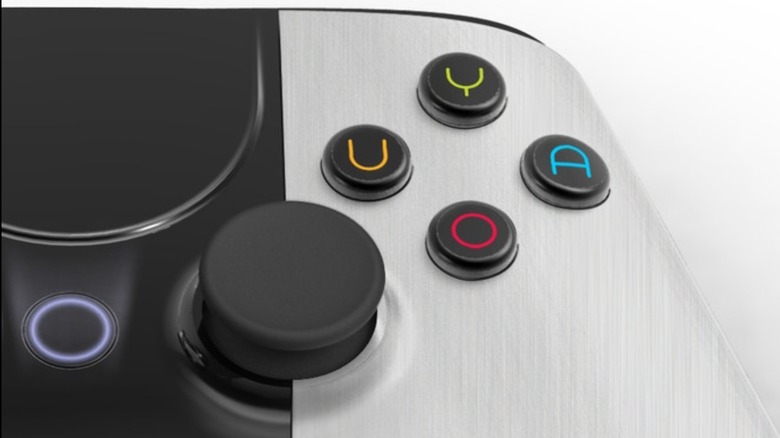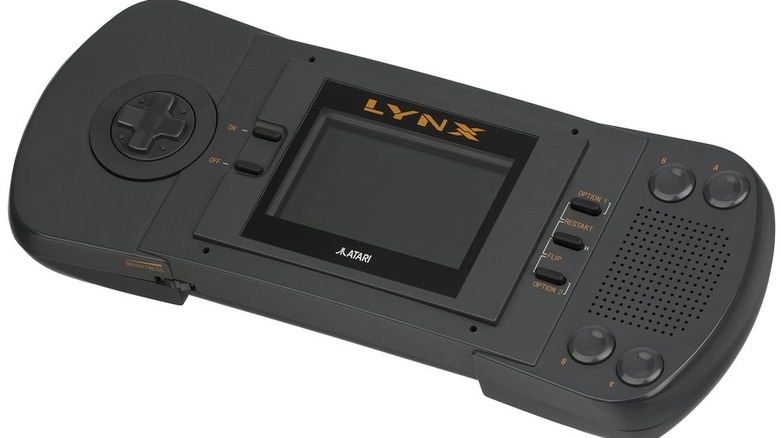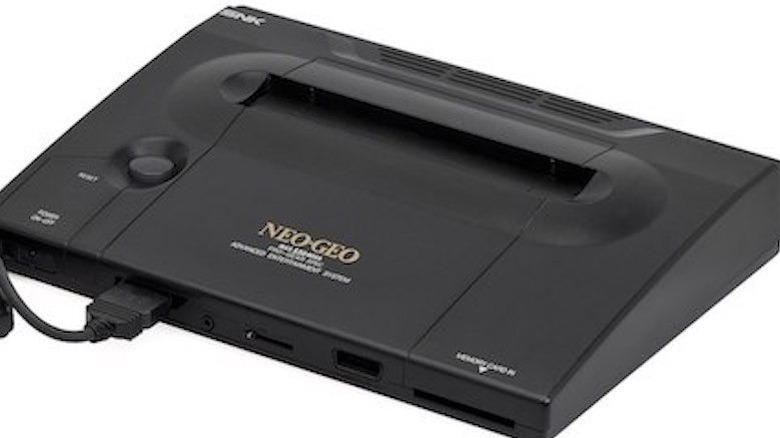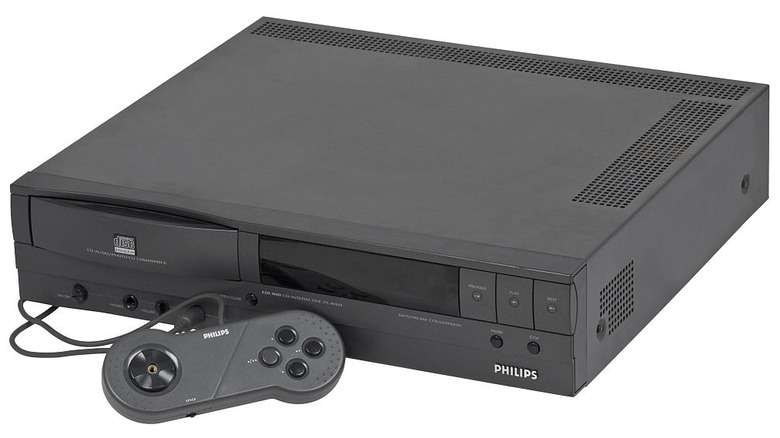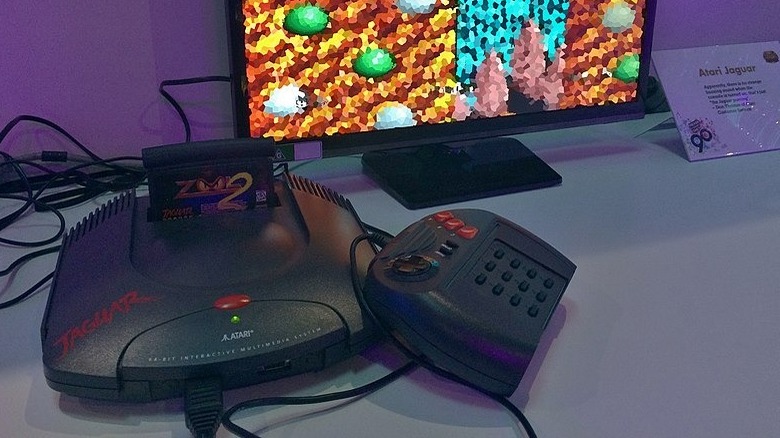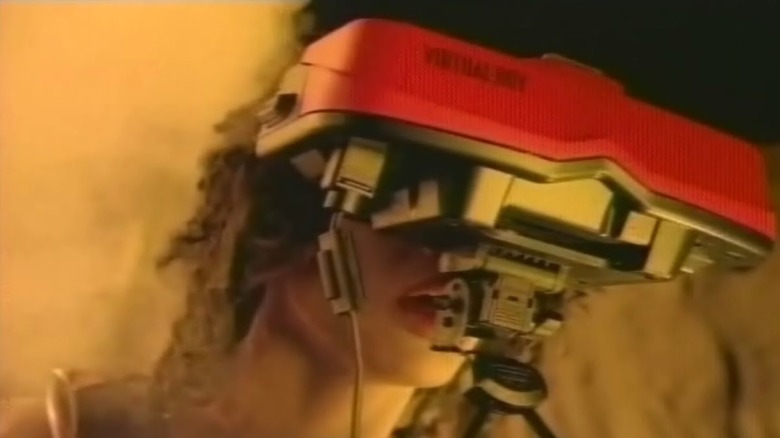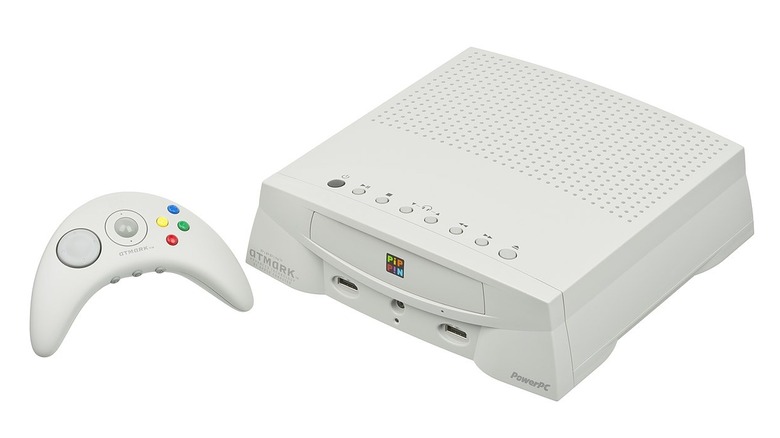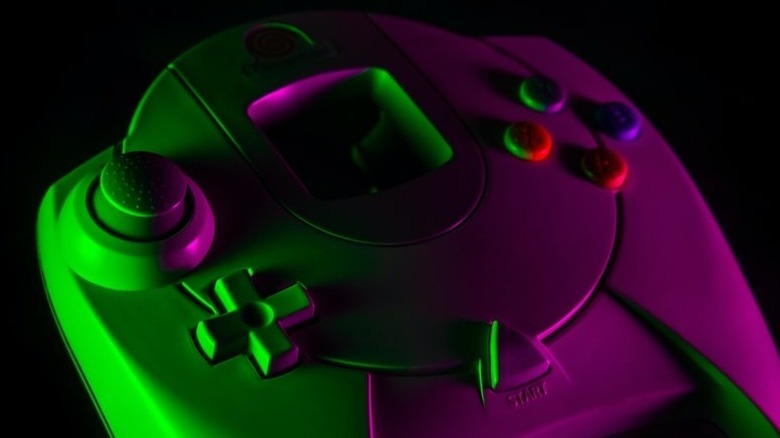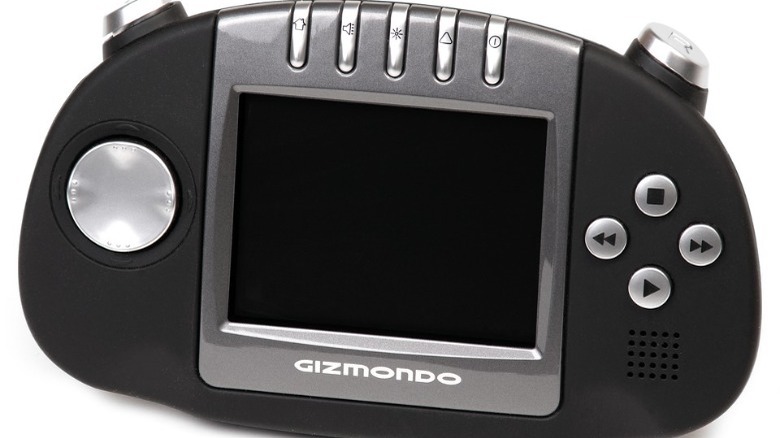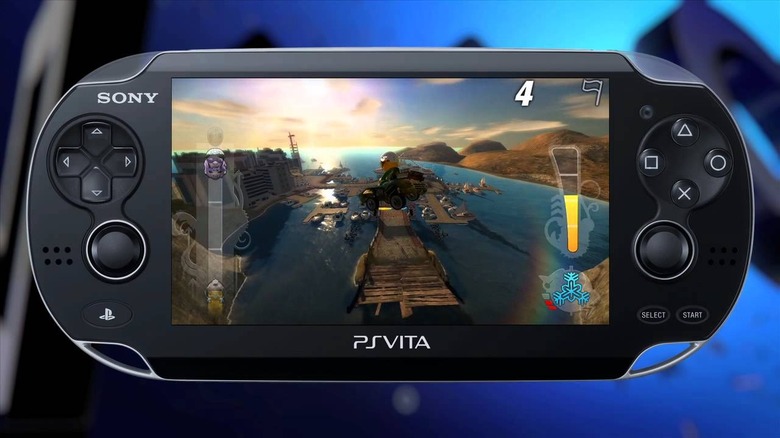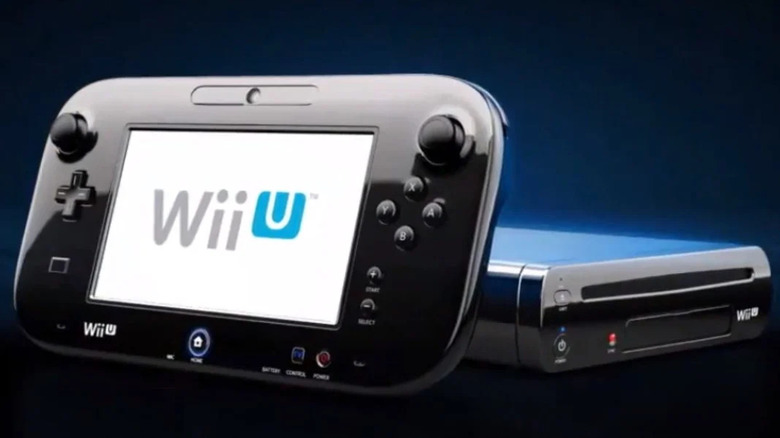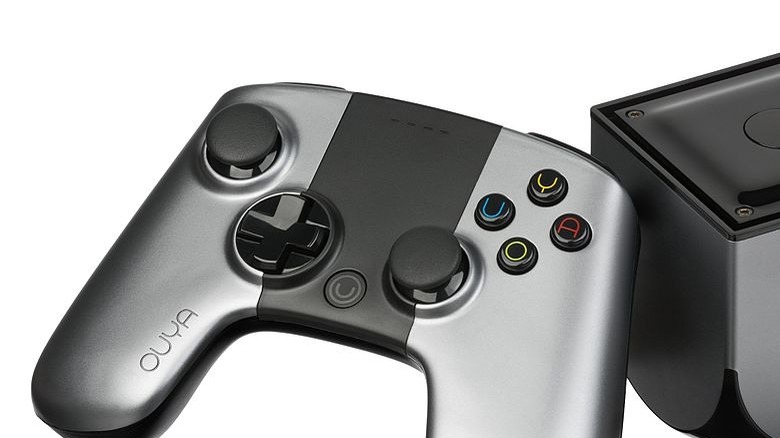The Biggest Console Flops Of All Time
Video games get it wrong all the time. Every other day there's a new release lambasted by critics and hated by players. Luckily, when that happens, a gamer can just chuck the disc or trash the download and move on to the next title, but what's a person to do when their entire console is the equivalent of "Superman 64?"
Failure comes in all shapes and sizes, and even industry titans suffer missteps. Sometimes a bad bit of hardware can be brushed under the rug and quickly forgotten when a company bounces back with a killer new system. Other times, a bad console can spell doom for its creator, and more than once a subpar release has tanked an entire organization. Looking back, it's rarely difficult to see why certain systems failed, even if some of the consoles that shouldn't exist turn into beloved collector's items decades later. From the barely functional to the bafflingly broken, here are the biggest console flops of all time.
Atari Lynx
On paper, the Atari Lynx was nothing short of revolutionary. As detailed by Engadget, the small handheld was ultra-powerful for its day and age. It boasted 16-bit graphics, plus scaling and rotation –- features that would be part of Nintendo's flagship console over a year later. The Lynx was also the first handheld gaming device to feature full color graphics. It fit perfectly in a pocket, and was designed to be reversible so players could put the directional pad on the left or right side.
Despite how forward-thinking the Lynx was, Atari made a crucial mistake that would be repeated by countless gaming companies and consoles through the years — it didn't build out the Lynx's gaming catalogue. Atari primarily focused on creating arcade ports, which it more-or-less nailed, but it put very little effort into developing original content for the Lynx. Even though Nintendo didn't have a handheld device that could match the Lynx in terms of hardware, its extensive lineup of puzzle games and pocket platformers ultimately pulled players away from Atari.
SNK NeoGeo AES
According to Giant Bomb, SNK launched the NeoGeo Advanced Entertainment System (AES) with the intention of bringing 16-bit arcade-quality graphics into players' homes. In fact, the AES is nearly indistinguishable, at a hardware level, from SNK's flagship arcade system, the MVS, which allowed arcade operators to run multiple games in a single machine. SNK even developed a special memory card that allowed players to save their games at the arcade and continue playing them at home.
All of that sounds like a dream come true to a video game fanatic circa 1990. So, what went wrong? The NeoGeo AES launched with a $650 price tag –- adjusted for inflation that's just over $1,300 in 2021. Even if players were willing to stomach that gut-wrenching buy-in cost, individual games for the console sold for anywhere between $100 and $300 in 1990. Few people could afford to play on a NeoGeo, no matter how impressive its graphics were for the time. With cheaper options available, sales for the console tanked, but SNK continued producing it until 1997. The AES became a collector's item later in its lifespan, to the point that developers continued making games for it until 2004.
Philips CD-i
How many people remember that Philips once built a gaming console? "Gaming console" might be understating it. Per Atlas Obscura, the CD-i was designed to be an all-in-one entertainment device. It could play games or CDs, run special interactive educational content, display photos, and even screen movies with an additional piece of hardware. Philips created a console that was ahead of its time, but it became a failure that cost the company, by some reports, a billion dollars.
Two things held the CD-i back: an astronomical price and some of the worst games in history. The CD-i cost $1,000 upon release, making it the most expensive video game console ever launched. Through a partnership with Nintendo, Philips was able to create CD-i games with popular Nintendo characters from the "Mario" and "Zelda" franchises. Instead of taking advantage of a unique opportunity, Philips developed clunky games with uncomfortable animated cutscenes that made no attempt to line up with the stories Nintendo had already established with its characters. The CD-i allegedly sold fewer than 600,000 units before Philips pulled it from the market and left gaming consoles behind in 1996.
Atari Jaguar
It's not quite accurate to say that the Jaguar killed the Atari Corporation, but the console did fail to save the company from collapsing. As far as final outings go, Atari could have done much better. It advertised the Jaguar as being a 64-bit console, but controversy swarmed over its release when gamers discovered that it only had a 32-bit CPU (per The Video Game Critic).
The Jaguar probably could have survived the advertising drama if it had otherwise been a great gaming device, but that wasn't the case. The system had a clunky controller that featured a number pad and only three primary buttons. Atari eventually reworked the controller to feature the standard six button configuration, but by that point it was too late. Most of the Jaguar's 2D games were arcade ports that failed to impress players, and its 3D titles struggled to run on the underpowered CPU. After the Jaguar, Atari faded into obscurity.
Nintendo Virtual Boy
The Virtual Boy was one of the earliest attempts at VR gaming. Nintendo is known for producing innovative portable gaming devices, but instead of changing the way people play, the Virtual Boy was a complete failure on almost every level. The chunky black and red device looks like a Viewmaster that sits on a small tripod. It has two ports, one for a small controller and another that was presumably intended for a multiplayer cable that never came to fruition. Considering VR gaming has been slow to catch on in the 21st century, it's no wonder that Nintendo's console failed to take off.
In 1995, gamers were used to full color 32- and 64-bit graphics that practically glowed. The Virtual Boy rendered its 3D graphics in just red and black. That color scheme, combined with the necessity of bending over to use the tripod-bound system, gave most players a headache after just a few minutes of use. Anyone unbothered by headaches would quickly run into other problems. The Virtual Boy was powered by six AA batteries that lasted, at most, four hours. Because of lagging sales, Nintendo only released 22 Virtual Boy games in Japan and just 14 in the US before discontinuing the console.
Apple Bandai Pippin
In 1996, Apple released a gaming console that it probably hopes most people have forgotten. The Pippin was manufactured by Bandai, and that outsourcing seemed to be part of Apple's ethos with the device. The system didn't store its own operating system, instead relying on information from individual gaming CDs (via Business Insider). The boxy console evokes typical '90s style, but the controller, lovingly called the Apple Jack, is shaped like a boomerang with a mouse wheel in the center.
With the Pippin, Apple repeated a mistake that by 1996 should have been easily avoidable. The console cost $600 at launch, double the cost of Sony's PlayStation, and Apple put very little effort into building out the Pippin's library. Ultimately, the Pippin became not just one of Apple's biggest failures but also one of the biggest console flops in gaming history. In the year between its release and its discontinuation, the Pippin only sold 42,000 units. By comparison, Nintendo's Virtual Boy sold over a million units.
Sega Dreamcast
There's more than one reason why the Sega Dreamcast completely failed despite being a solid console overall. Unlike some of the other flops on this list, the Sega Dreamcast was very popular amidst its players. Sega got the jump on many of its competitors when it launched its next-gen console in Japan in November 1998. Less than a year later, the Dreamcast came to the US and Europe. Players were impressed by the Dreamcast's graphics capabilities and its built-in internet (a first for gaming consoles). Dreamcast sales went through the roof and by 1999 Sega had moved over a million units; however, there was trouble on the horizon.
Sony launched the PlayStation 2 in 2000 and the Dreamcast began its slide into obsolescence. Players were attracted to the PlayStation 2 because of its DVD capabilities, but Sega's real problems began when developers started jumping ship for Sony. Sega had previously killed off its Saturn console to put all its efforts behind the Dreamcast, which upset some of its most important game developers. With PlayStation sales on the rise, developers decided to take a chance on Sony, and the rest is history. Sega ended production of the Dreamcast in 2001, and at that point the company had more consoles sitting in warehouses than it had sold in the system's lifetime.
Tiger Telematics Gizmondo
It's not often that a brand new gaming company forms, creates an unprecedentedly powerful device, and topples the market dominance of its competitors. That's not the story of Tiger Telematics and the Gizmondo, but maybe it could have been. In 2005, the Gizmondo promised to be a portable electronic device with a list of features that might seem all too familiar these days (per Input Mag). It could, in theory, play games and music, take pictures with a JPEG camera, track its user's location with GPS, send SMS messages, and work as a basic PDA. In reality, a Gizmondo does very few of those things, or does them all but so poorly it might as well not.
Subpar functionality wasn't the Gizmondo's only problem. Just fourteen games were developed for the handheld, in part because the company behind the system went bankrupt in 2006. The Gizmondo had a clear vision of the future of handhelds, but Tiger Telematics had no idea how to bring that vision to the world. After selling under 25,000 units, the Gizmondo slipped into insignificance.
Sony PlayStation Vita
PlayStation never ended up dominating the handheld gaming market, but it did create two handheld consoles. The PSP, released in 2005, gave people a unique on-the-go multimedia device. In February 2012, Sony released the PS Vita with the intention of giving gamers a console-quality experience they could take with them anywhere. That may seem like a lofty ambition, but it's one that Sony more or less achieved. The Vita had an astounding array of features: an OLED screen, dual joysticks, front- and back-facing cameras, and two touch screens. In addition, the Vita used a hybrid model for its games, meaning players could buy physical game cartridges or download games directly from the PlayStation Store.
Despite all that functionality, the Vita ended up selling only around 16 million units, as compared to the PSP's estimated 80 million (via The Verge). The handheld's biggest problem was its timing. The Vita came out after smartphones blew up the market and put convenient on-the-go games in everyone's pocket. At the same time, the Vita released before typical broadband capabilities matched its most ambitious goals, like exclusively digital games and remote play for console titles. A few years in either direction might have saved the Vita, but instead its dwindling sales encouraged Sony to refocus its efforts on home consoles.
Nintendo Wii U
After the Virtual Boy, Nintendo had an unbelievable run of consoles. From the Nintendo 64 to the Nintendo DS to the Wii, it seemed like Nintendo could do no wrong. Maybe by 2012 it was overdue for a failure. The Wii U was an interesting half-step between the Wii and the Nintendo Switch. The console came with a tablet-like controller that gave players the option to continue gaming on their own when the TV was otherwise taken with something else. Some games found ways to utilize the unique device, but most ignored it entirely. Making matters worse, the Wii U couldn't play DVDs or Blu-rays and, as CNET noted, "in graphics it lags behind the newer Microsoft and Sony consoles."
Clearly gamers weren't impressed with what Nintendo had offered them. The Wii U became a tremendous failure. According to the official Nintendo site, the console sold fewer than 14 million units, making it barely more successful than the Virtual Boy back in 1995. Luckily, Nintendo learned from its mistakes and released the Switch in 2017. Within two years, the Switch doubled the sales of the Wii U (via HYPEBEAST), and most people forgot about Nintendo's flop entirely.
Ouya
The team behind the Ouya hoped to use the openness of the Android operating system to challenge the big names in gaming. They launched their project on Kickstarter and raised over $8.5 million to build what they promised would be "a new kind of video game console." The Ouya sold for $99, giving people easy access to what could be an exciting new avenue in gaming. Unfortunately, most of Ouya's big promises came with asterisks. As a reviewer for The Verge noted upon the Ouya's release, "This console isn't finished – it's not even close."
The Ouya was supposed to be hacker-friendly so anyone could modify the system or sideload any apps they wanted. In reality, only the most tech savvy Android users could possibly hope to do some custom work with the system. Every game in the Ouya store was mandated to be free, but that caused big developers to run from it and smaller developers to fill their games with microtransactions. Using Android as the system's operating system gave it plenty of flexibility, but because Ouya did very little to beef up the OS, the final product did nothing a high-tier cell phone couldn't accomplish. The Kickstarter sensation ended in disappointment for most of its investors.

